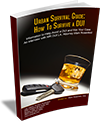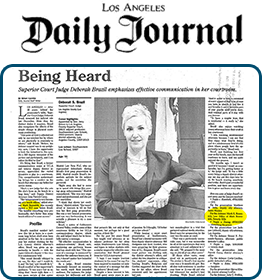“Prosecution witnesses that work for the Government would like people to believe that breath testing actually underestimates the true blood alcohol level, adding a degree of certainty to the breath testing process.”
This idea was originally put forward by a Dr. Dubowski back in 1982.
Dr. Dubowski was a government scientist who conducted research for the National Highway and Traffic Safety Administration, and Dubowski opined back in 1982 that based on his testing, 86% of the population was underestimated in breath testing, meaning that the true blood alcohol level was actually higher. However, Dr. Dubowski did not furnish or publish all of the data and research that he did in order to come up with the numbers.
The studies that were done were not peer-reviewed, that is reviewed by other scientists to determine their accuracy.
Further investigation and research actually shows that Dr. Dubowski’s work was not complete and not necessarily accurate for the population as a whole.
Dr. Dubowski used a very small segment of the population in conducting his research.
Dr. Dubowski limited his research to healthy males alone and did not include general population or women in his studies. Dr. Dubowski also limited his research to healthy males that were in the post-absorptive state, which means they had finished drinking and were past the highest blood alcohol level that they were ever going to reach. This unfortunately is not an accurate representation of the general population or where we find most people who are stopped and arrested for driving under the influence.
A more thorough analysis though is that there are ranges of air and estimates that need to be made and a more appropriate statistical approach in analysis with a normal air curve would show that Dubowski’s results actually show approximately 77% underestimating true blood alcohol level with 23% overestimating someone’s true blood alcohol level. This would be in the fully post-absorptive state. However, when we are dealing with drivers suspected of driving under the influence, they are not in a laboratory condition in a fully post-absorptive state, and if somebody is not fully absorbed, then the ratio or air rate would change. If somebody was absorbing alcohol from recently drinking, which could be several hours, the uncertainty in breath testing compared to blood would increase as much as 53%.
Just because the government witnesses want you to think that breath testing is as accurate as blood testing does not make it so, and a thorough analysis and review of all of the documents regarding a DUI investigation needs to be done in order to have any certainty that breath testing is accurate in any particular case.






 Personal Attention
Personal Attention Every criminal case is unique and no attorney can guarantee the outcome of a case. The information on this site is legal advertising and for general information only. Using this site, requesting books, information, consultations or communicating with Attorney Rosenfeld through its site does not form an attorney/client relationship.
Every criminal case is unique and no attorney can guarantee the outcome of a case. The information on this site is legal advertising and for general information only. Using this site, requesting books, information, consultations or communicating with Attorney Rosenfeld through its site does not form an attorney/client relationship.








